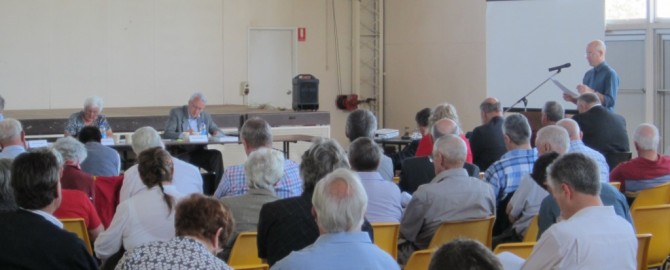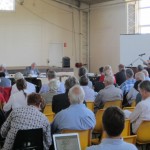I had an op ed piece in yesterday’s Sydney Morning Herald about the economic assessment of coal and coal seam gas projects. The piece was originally longer and focussed more on the Cobbora coal project and my trip to Dunedoo late last year. A few people have been interested in the original, so I’ll paste it below:
Coal in NSW – from Obeid to Mr Bean?
Rod Campbell
Economists at Large
With Ian Macdonald and Eddie Obeid being so recently dragged in front of corruption hearings relating to coal projects, you might think that the new NSW government would be reluctant to get involved directly in the coal industry. Think again.
The NSW government is considering whether to proceed with the state owned Cobbora Coal project, proposed for near Dunedoo, despite the misgivings of some members. The project hopes to produce 20 million tonnes of coal per year, which it will sell on a “cost recovery basis” (i.e. a loss) to electricity generators. If it proceeds, Cobbora will be the only state owned and operated coal mine in Australia.
The reason the government is developing this mine is that no one else will. There are no great riches to be made from this mine. If the Obeid saga resembles coal deals constructed by Jabba the Hut, the Cobbora project is more a project pushed by Mr Bean.
Cobbora’s coal is of low quality with high ash relative to other NSW mines. The project’s own assessment valued the coal at $77 per tonne at a time when benchmark prices were around $100. But rather than sell at the estimated value of $77, Cobbora has arranged to sell to state owned generators at $31 per tonne. No mine in the country can recover costs at this price.
Counterintuitively, the project’s economic assessment claims the project will benefit the “NSW community” by around $2 billion. You need to read the fine print to discover the subsidised generators are considered part of this community, while competing generators are not. Further, in a footnote, we’re told that the wider community will eventually benefit as “In a competitive market, all of this benefit would be passed through to electricity consumers.”
What you’re not told in the economic assessment is that the state government would like to sell the generators. The problem is that they’re not worth very much. So the original idea was to develop Cobbora’s unwanted coal and give it to the generators at a loss, so that someone might like to buy them. While the deal might deliver a short term cash bonus for the government of the day, the state is then left with a loss making coal mine for 21 years.
Economists throughout NSW must be opposed to this doublethink, but none seem to have noticed. Instead, a local environment group, opposed to the project as it will destroy threatened native habitat, asked me to review the economic assessment and to travel to Dunedoo and make a submission to the Planning and Assessment Commission.
Dunedoo isn’t every economist’s idea of the perfect place to present their analysis, but it made a nice break from the spreadsheets, the historic pub is magnificent and I met some interesting people.
One was an engineer from one of the generators. “Here to check on your handout?” I asked. “Haha, if it makes you feel any better, we don’t even really want this coal”, he replied.
The engineers don’t want Cobbora’s coal because the high ash content makes it difficult to burn. With current lower coal prices, they’re looking to buy better coal from other sources. As a result, the government is exploring options to sell, lease or delay the project, but all of these will lose money for NSW taxpayers.
Most Mr Bean episodes have a happy ending and hopefully this one will too. The NSW government is currently deciding what to do with the Cobbora project and is expected to come to a decision in the coming weeks. They need to walk away from it.
Like Mr Bean changing into his Speedos at the beach without first taking his trousers off, it might be a little uncomfortable, but it will save a much greater embarrassment in the long run.


